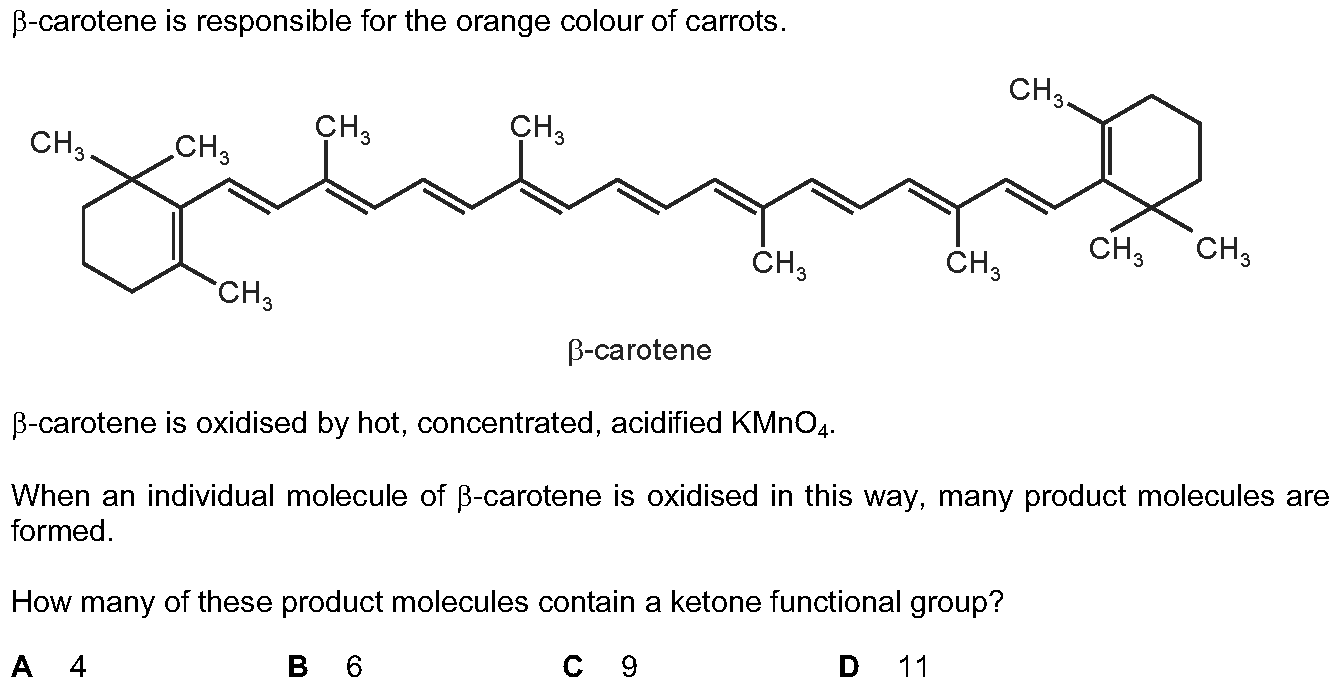
Q30:
AS & A Level Chemistry - 9701 Paper 1 2014 Winter Zone 1
Questions:
30/40

Topic: CH15 - HYDROCARBONS
Solution
Solution is B

PRACTISE
Similar Questions

LEARN
Concepts with Sparky

More Questions from this Topic
Theory
CH15 - HYDROCARBONS
Chlorine, $Cl_{2}$, reacts with many elements and compounds to form chlorides.Table 2.1 shows information about some chlorides of Period 3 elements.Ta...
2024
 Spring
Spring
 Spring
Spring
 5
5
Theory
CH15 - HYDROCARBONS
CH_3(CH_2)_5CHBrCH_3 exists as a pair of stereoisomers.(a) Draw the three-dimensional structures of the two stereoisomers of CH_3(CH_2)_5CHBrCH_3. R c...
2024
 Summer
Summer
 Summer
Summer
 2
2
Theory
CH15 - HYDROCARBONS
(a) Complete Fig. 4.2 to show the mechanism for the formation of 1,2-dibromoethane in reaction 1.Include charges, dipoles, lone pairs of electrons and...
2024
 Winter
Winter
 Winter
Winter
 2
2
Theory
CH15 - HYDROCARBONS
Hydrocarbon molecules contain covalent bonds.(a) Define covalent bond....................................................................................
2024
 Summer
Summer
 Summer
Summer
 2
2
Theory
CH15 - HYDROCARBONS
Benzene, $C_6H_6$, reacts with chloroethane, $C_2H_5Cl$, in the presence of a suitable catalyst to form ethylbenzene, $C_6H_5C_2H_5$. In the presence ...
2024
 Winter
Winter
 Winter
Winter
 2
2
Theory
CH15 - HYDROCARBONS
(a) Nitrosyl chloride, NOCl, can be formed by the reaction between nitrogen monoxide and chlorine, as shown.$2NO + Cl_{2} \rightarrow 2NOCl$The initia...
2024
 Summer
Summer
 Summer
Summer
 2
2
Theory
CH15 - HYDROCARBONS
Benzene reacts with chlorine gas to form chlorobenzene. This reaction can be described as the reaction between benzene molecules and $Cl^+$ ions. The ...
2024
 Winter
Winter
 Winter
Winter
 2
2
Theory
CH15 - HYDROCARBONS
Benzene, C_6H_6, reacts with chloroethane, C_2H_5Cl, in the presence of a suitable catalyst to form ethylbenzene, C_6H_5C_2H_5. In the presence of the...
2024
 Winter
Winter
 Winter
Winter
 2
2
Theory
CH15 - HYDROCARBONS
(a) (i) Define addition reaction.........................................................................................................................
2023
 Spring
Spring
 Spring
Spring
 2
2
Theory
CH15 - HYDROCARBONS
(a) (i) Give the systematic name of D....................................................................................................................
2023
 Winter
Winter
 Winter
Winter
 2
2
More Questions from year 2014
MCQ
CH8 - REACTION KINETICS
The Boltzmann distribution for a gas at constant temperature is shown below. If the temperature of the gas is reduced by 10°C the graph changes shape...
2014
 Summer
Summer
 Summer
Summer
 2
2
MCQ
CH2 - ATOMIC STRUCTURE
Which compound has the greatest total number of lone pairs of electrons in the valence shells of all of its atoms?
2014
 Summer
Summer
 Summer
Summer
 2
2
MCQ
CH5 - CHEMICAL ENERGETICS
A reaction pathway diagram is shown. Which enthalpy change could the diagram not apply to?
2014
 Summer
Summer
 Summer
Summer
 3
3
MCQ
CH2 - ATOMIC STRUCTURE
Use of the Data Booklet is relevant to this question.The most common ion-molecule reaction in gas clouds of the Universe is as shown.$$\text{H}_2(g) +...
2014
 Summer
Summer
 Summer
Summer
 2
2
MCQ
CH6 - ELECTROCHEMISTRY
The electrolysis of brine using the diaphragm cell is an important industrial process. What happens at the anode?
2014
 Summer
Summer
 Summer
Summer
 2
2
MCQ
CH5 - CHEMICAL ENERGETICS
Hydrazine, $\text{N}_2\text{H}_4$, is used as a rocket fuel because it reacts with oxygen as shown, producing 'environmentally friendly' gases.$\text{...
2014
 Summer
Summer
 Summer
Summer
 2
2
MCQ
CH4 - STATES OF MATTER
A 10.0 cm^3 bubble of an ideal gas is formed on the sea bed where it is at a pressure of 2020 kPa. Just below the sea surface the pressure is 101 kPa ...
2014
 Summer
Summer
 Summer
Summer
 2
2
MCQ
CH3 - CHEMICAL BONDING
Four substances have the physical properties shown in [Table_1].Which substance is an ionic solid?
2014
 Summer
Summer
 Summer
Summer
 2
2
MCQ
CH5 - CHEMICAL ENERGETICS
The enthalpy change of formation of $\text{Mn(NO}_3)_2(\text{s})$ is $-696\text{ kJ mol}^{-1}$.The enthalpy change of formation of $\text{MnO}_2(\text...
2014
 Summer
Summer
 Summer
Summer
 2
2
MCQ
CH3 - CHEMICAL BONDING
X is an element in Period 2. In which fluoride is the F−X−F angle the largest?
2014
 Summer
Summer
 Summer
Summer
 2
2




 Share
Share




 Previous
Previous




